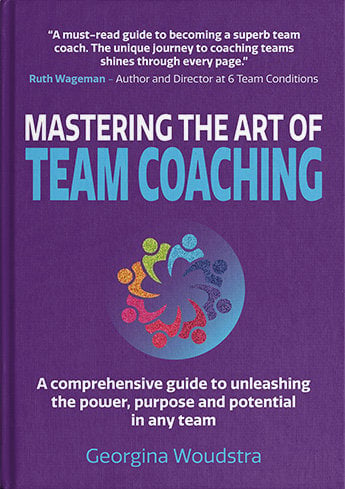Creating Awareness is the eleventh competency in the TCS Team Coaching Wheel. It focuses on the coach’s ability to integrate and accurately evaluate multiple sources of information, making interpretations that help the team gain awareness and achieve results. Creating awareness means that the coach embraces ‘not-knowing’– not having the answers to the team’s concerns. The coach’s role is not to fix the team’s problems but instead, to coach the team to find its own solutions, increasing the team’s autonomy and sense of ownership. The role of the coach is to encourage the team to use their own intuition, thinking and learning to create awareness.
The goal here is for the coach and team to engage in a mutually supportive dialogue of awareness, thinking and learning. After all, without awareness there can be no mastery!
Consider the following 7 stages:

- Awareness
Awareness is when the team becomes aware of itself and its processes. The team moves away from psychological ignorance and into greater self-consciousness. This can be a painful period as team members take an honest look at their thoughts, habits, choices, or ways of relating to each other. Often, they don’t like what they see and either go into denial… or partner with the coach on a path of growth.
- Exploration
After the shock of awakening to more awareness, the next step on the journey is one of exploration. Fuelled by a mixture of curiosity (“what makes us tick?”) and dissatisfaction (“I can’t believe we did/said/believed that!”). Team members want to find out more about the team’s personality and understand their intra- and interpersonal patterns.
- Discovery
Digging beneath the surface, the team eventually discovers itself. Discovery occurs when the team moves move from the “what?” to the “why?” While the previous stage (exploration) dealt with what we like/feel/do/think, discovery deals with why we like/feel/do/think everything that emerges inside of the team and ourselves.
- Understanding
Understanding is a crystallisation of the previous three stages: it’s a deep understanding of our dynamics and workings as a team. Teams that have reached this stage have a thorough and multi-layered understanding of the origins and reasons why they think, feel, and operate the way they do. Not only have they explored the conscious, visible aspects of their collaboration, but they’ve also explored the unacknowledged dynamics and met their true collective “personality”, including their shadow-self.
- Gratitude
Next is gratitude: the stage where the team gains appreciation for itself and all that they’ve been through. Without the previous stage of understanding, it’s almost impossible to practice appreciation because we don’t know what or why we do, think, and feel what we do. The team will stop sabotaging itself, start trusting itself, and start experiencing stronger relationships.
- Transformation
In this stage, the team begins to shed its old and limiting habits, perceptions, and compulsions and transforms into the most authentic version of itself possible. This process of transformation can feel uncomfortable and destabilizing at first. But ultimately, any change the team undergoes is liberating. Thanks to the previous five stages, the team can now make space for new growth to occur. Like a butterfly emerging from its cocoon, they feel more expanded, free, and grounded.
- Mastery
As a culmination of stages 1-6, this stage is about reaping the rewards of a stable and well-adjusted team in terms of effectiveness, performance, productivity, positivity, or any other measure the team wants to hold itself to. The team is whole, connected and aligned with its core, no longer a slave to its old “programming”. The team performs in a determined, calm, perceptive, wise, compassionate, and light-hearted manner.
So how do we start with the (keystone) awareness stage of this exciting journey towards great teams? Here are some methods and practices that come to our mind:
- Listen but don’t get hooked into the team’s “story”.
- Operate from a place of “less is more” as opposed to “more concepts, more tools, more exercises, models, theory…” When we adopt a “less is more” stance, we are much more present and our awareness is on the here and now, rather than the next item on the agenda or step on the process.
- Identify any interactional and behavioural patterns which may be helping or hindering the team’s success. Remain curious, naming and challenging any limiting beliefs, incongruities or unhelpful mindsets and behaviours that may arise in the coaching session.
- Invite the wider systemic perspective into the coaching dialogue and allow for substantial exploration to take place before inviting any solutions to any perceived problems.
- Give the team space to broaden their perspective and shift their viewpoints, leading to the possibility of new ideas and new action.
What would you add to this list?



